Saturday 30th March 2019
In 1864, Shimla became the summer headquarters of the British government in India, hence the building of the narrow gauge railway, and today it is the capital of Himachal Pradesh.
Although the forecast predicted rain and 18 degrees, the day was sunny, warm and bright.
The upper entrance/exit to The Combermere Hotel is on The Mall, the four mile long main street through the town and we walked up and along part of this past many of the important old buildings of the British Raj. Some have been impressively restored to their Victorian splendour, such as the Gaiety Theatre, and the town hall and, whilst others are almost derelict, there are clearly plans to repair them.
We climbed up to the eastern end of The Ridge to Christ Church, built in the gothic style in 1846 and the first church to be built in north India. This is not open to the public before 10:30 so we planned to return.
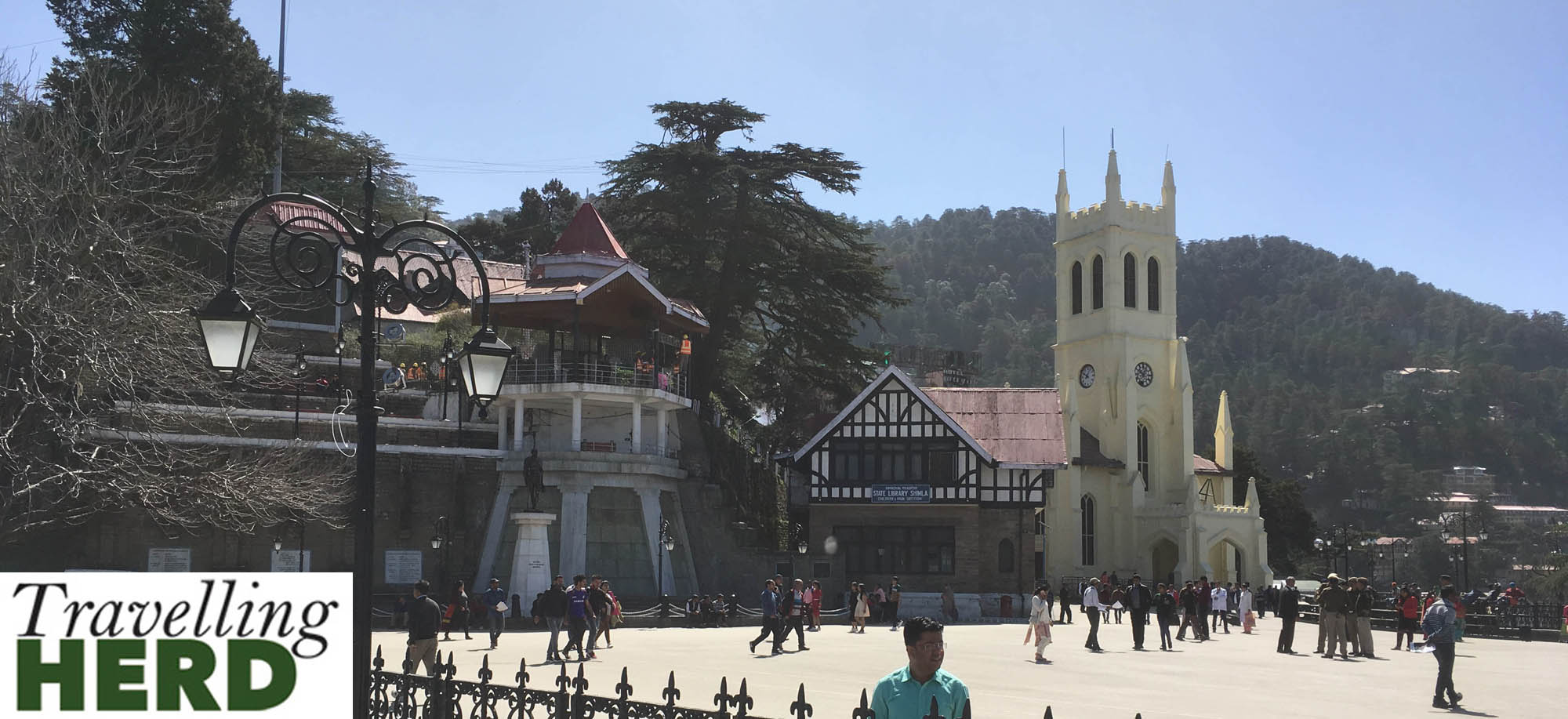
The Ridge is an open area which is 7,316 feet above sea level and boasts views across to the Himalayas . . .

. . . as well as the slightly incongruous mock Tudor library.
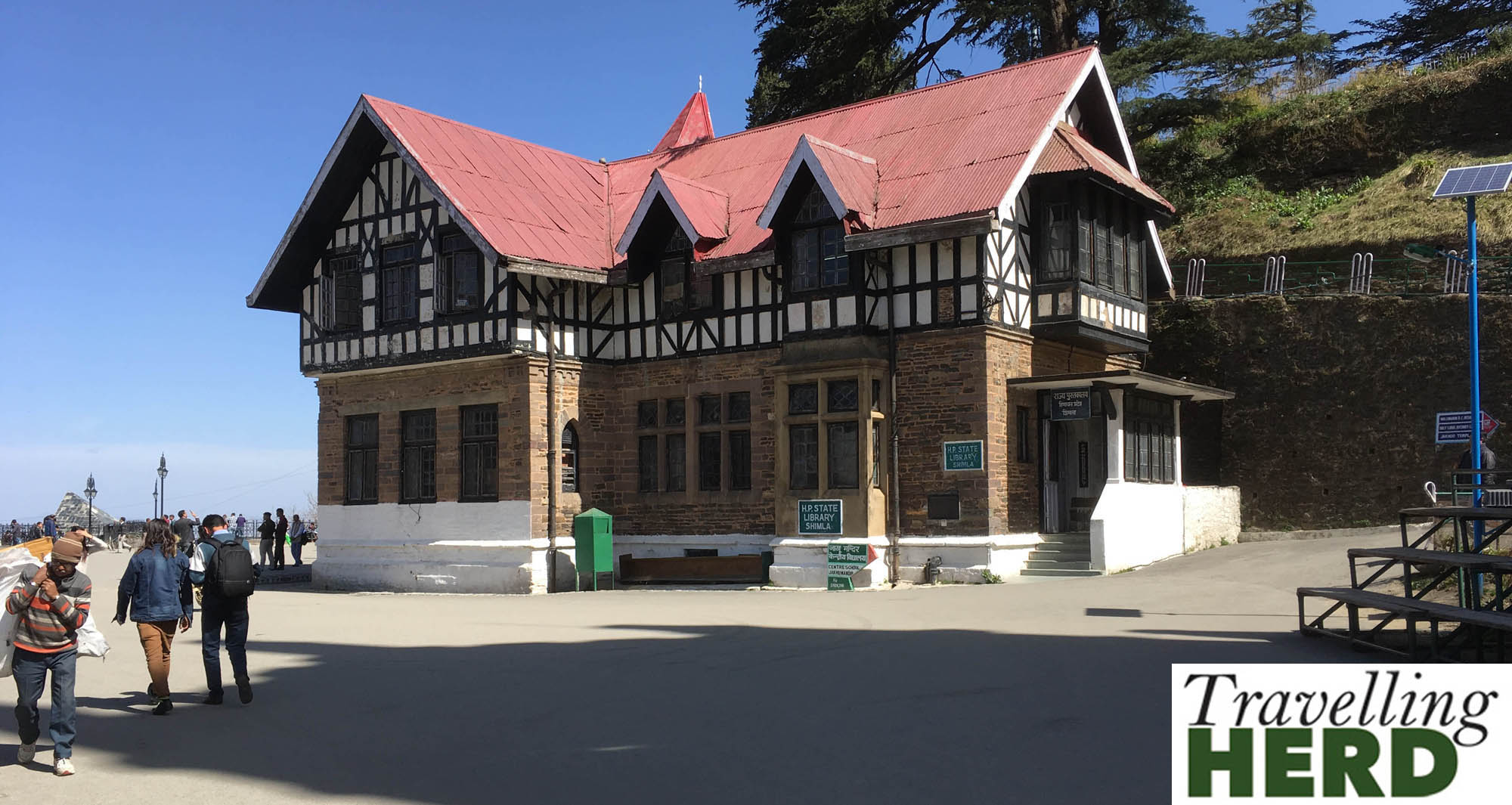

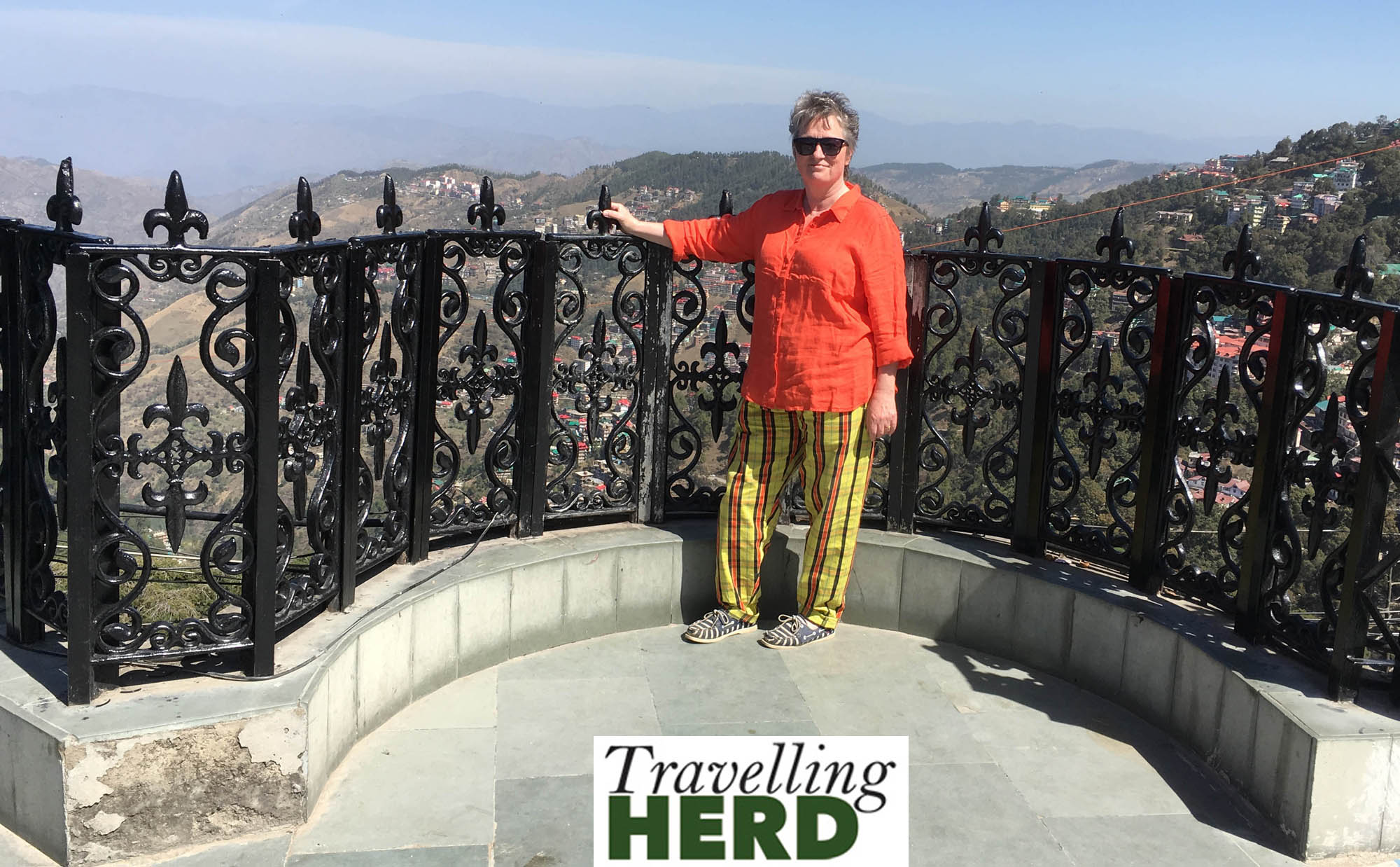
The Mall’s highest point is known as Scandal Point, whilst a sign outside the General Post Office says the the building is recognised as one of the finest remaining examples of British Colonial or “Hilly Architecture”.
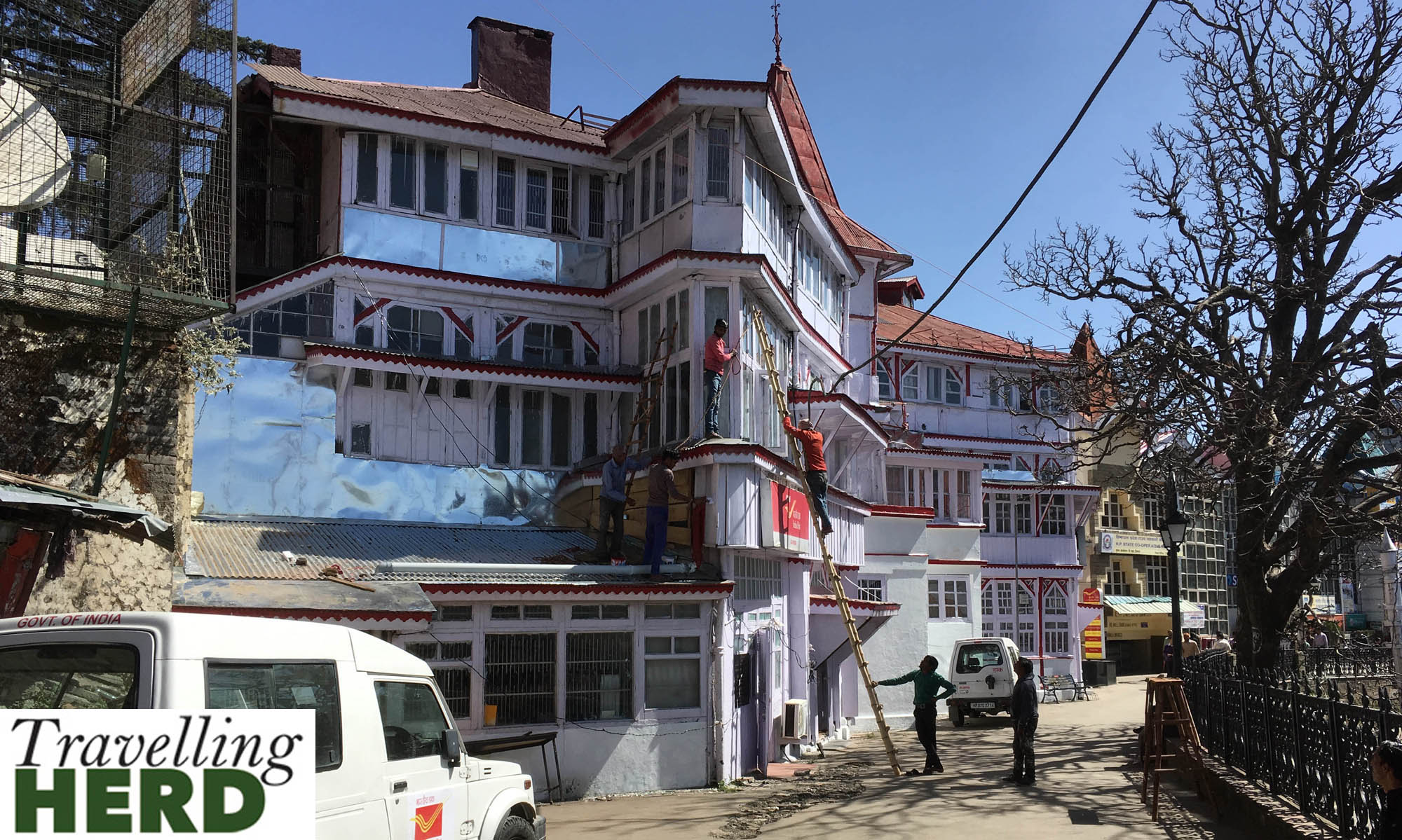
While we walked through The Ridge there was a rescue exercise underway to bring a “ casualty” down from a high balcony.
Jakhu Hill Temple is situated on the highest point in Shimla at 8,038 feet above sea level. The guide books say this is a steep walk (and it looks it) so we were delighted to discover the Jakhu Ropeway would take us up to the temple dedicated to the monkey god Hanuman. Whilst there are monkeys in and all around Shimla, which would have been their own domain before humans built here, as this is a temple to the monkey god, in Jakhu they abound. Signs warn visitors to be alert and keep their possessions safe.
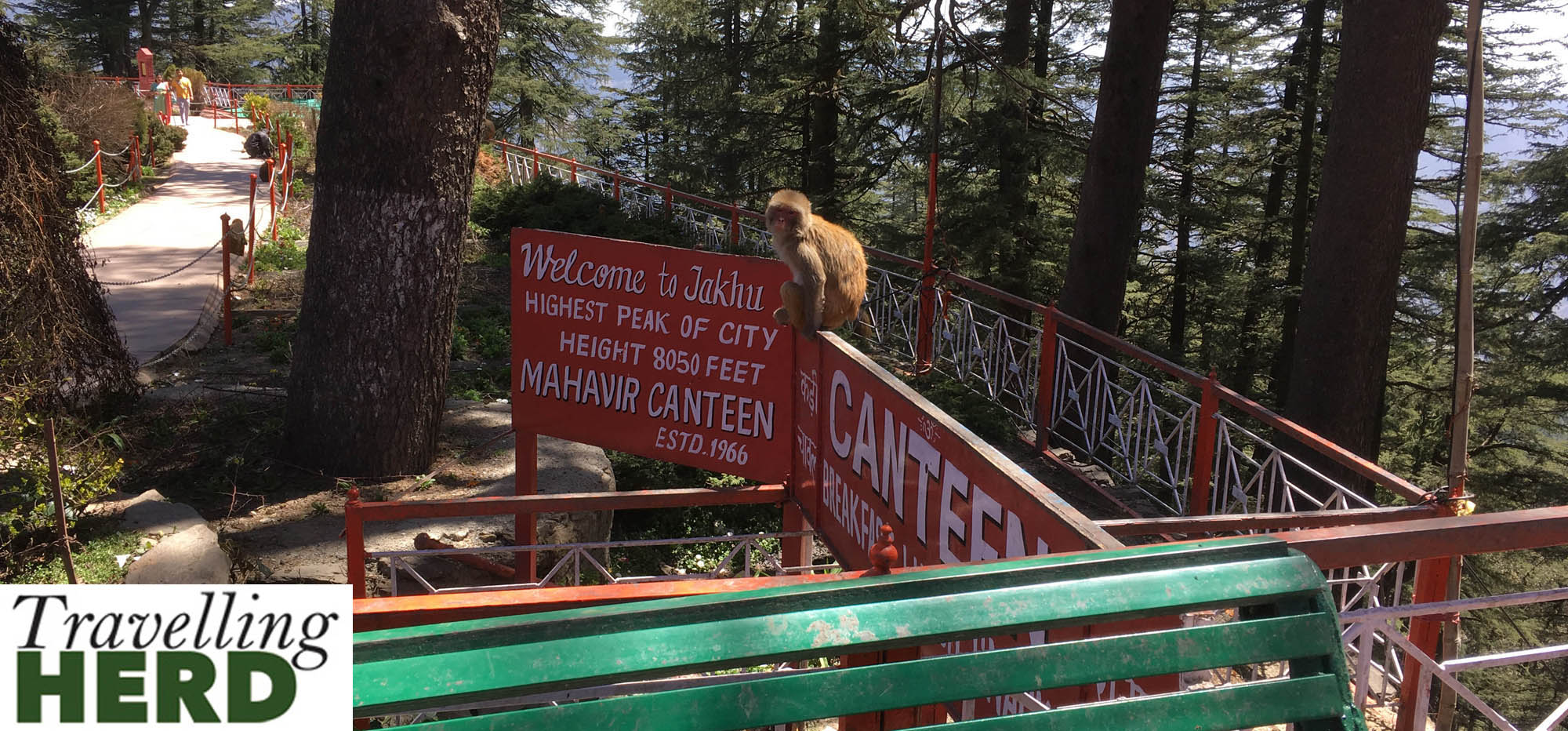
A helpful Indian gentleman warned Matilda to take off her sunglasses off as these would be targeted by acquisitive simians and she was likely to lose them. She was very grateful for the advice as she has had enough glasses issues this holiday.
A 108 foot high statue of Hanuman towers over the site and . . .
Boys’ humour: Robert couldn’t stop himself from conning Matilda into a selfie pose so he could ‘upskirt’ a monkey god statue in the Himalayas!
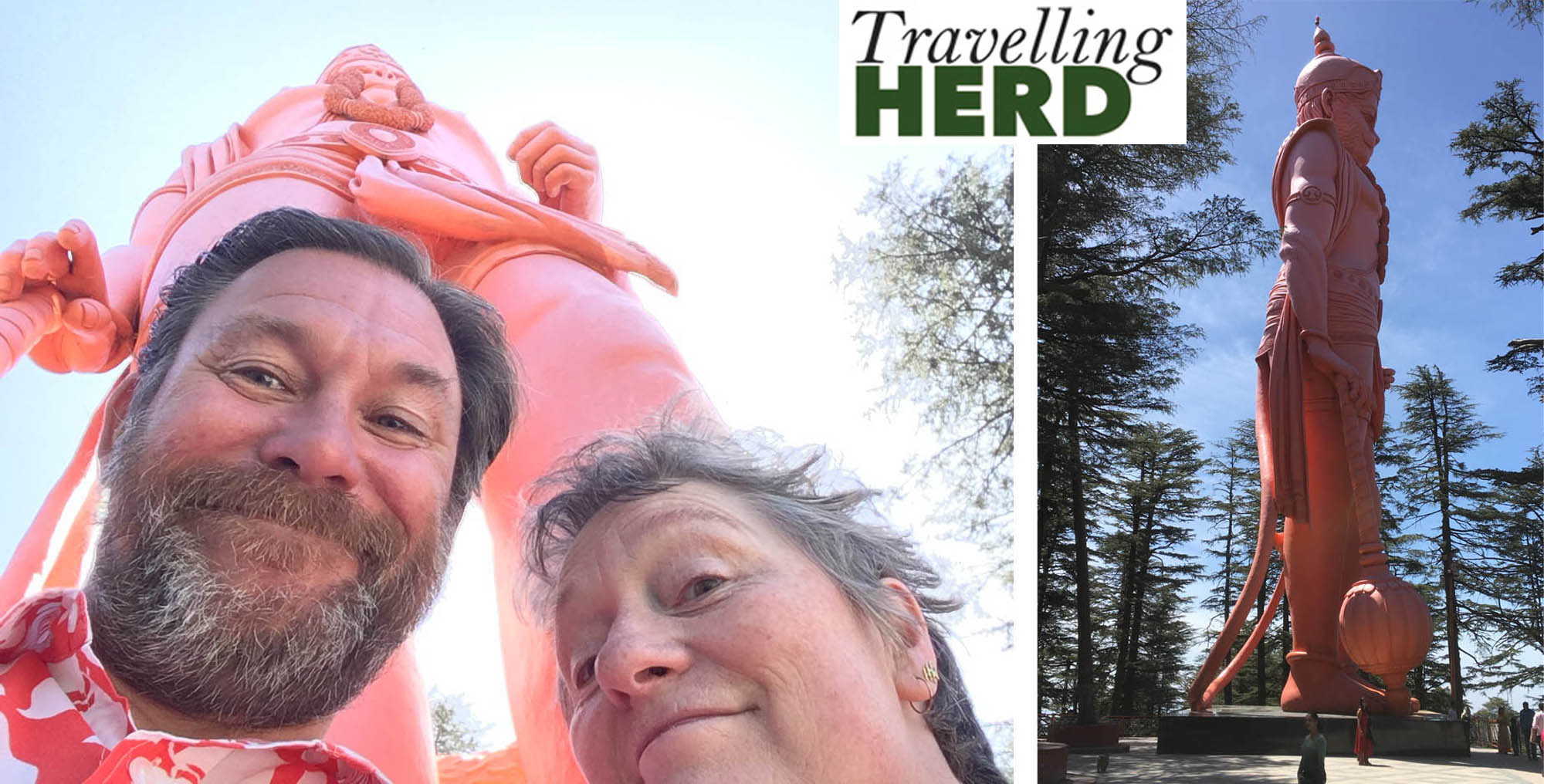
. . . taking the rope way back down . . .

. . . the statue can be seen towering over the trees.
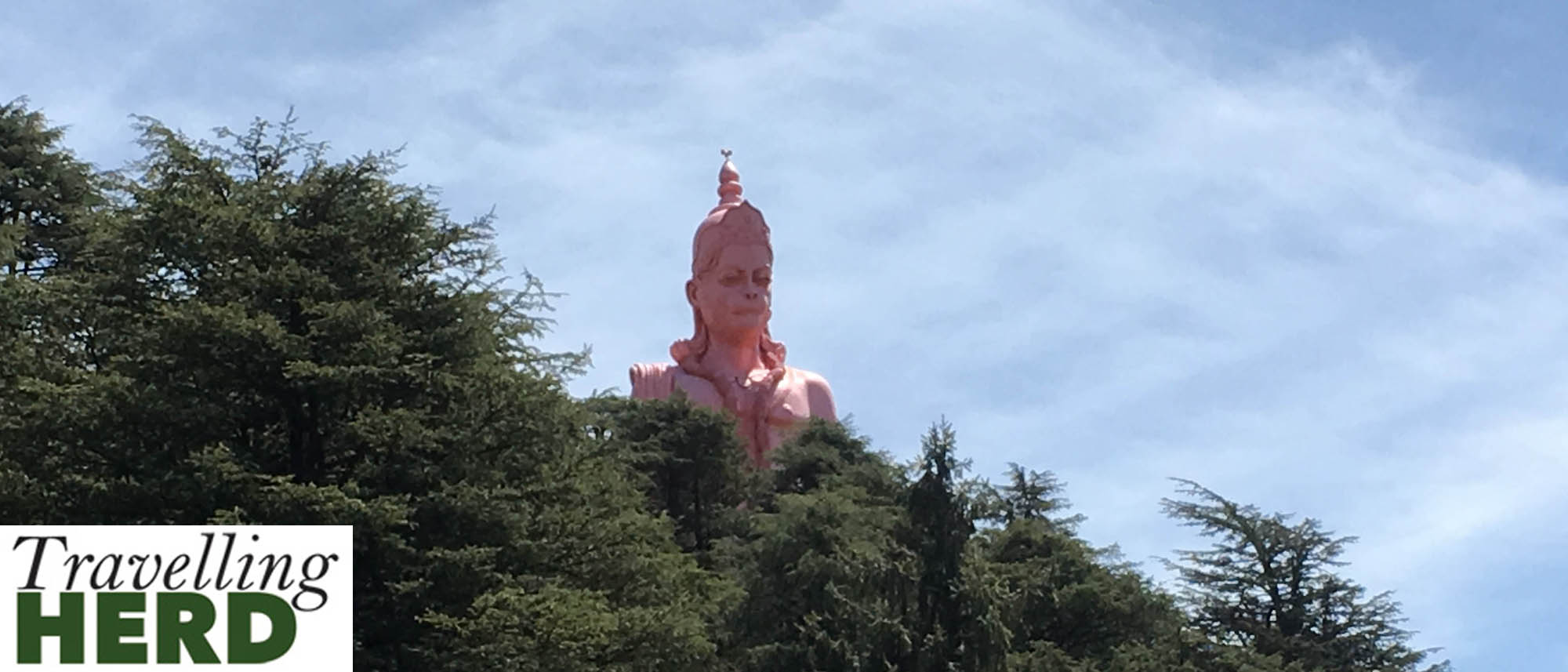
The interior of Christ Church has some lovely stained glass and, unusually, is painted purple beyond the altar. Equally unusual for a Christian church, a sign asked visitors to take off their shoes before walking down the aisle towards the altar.
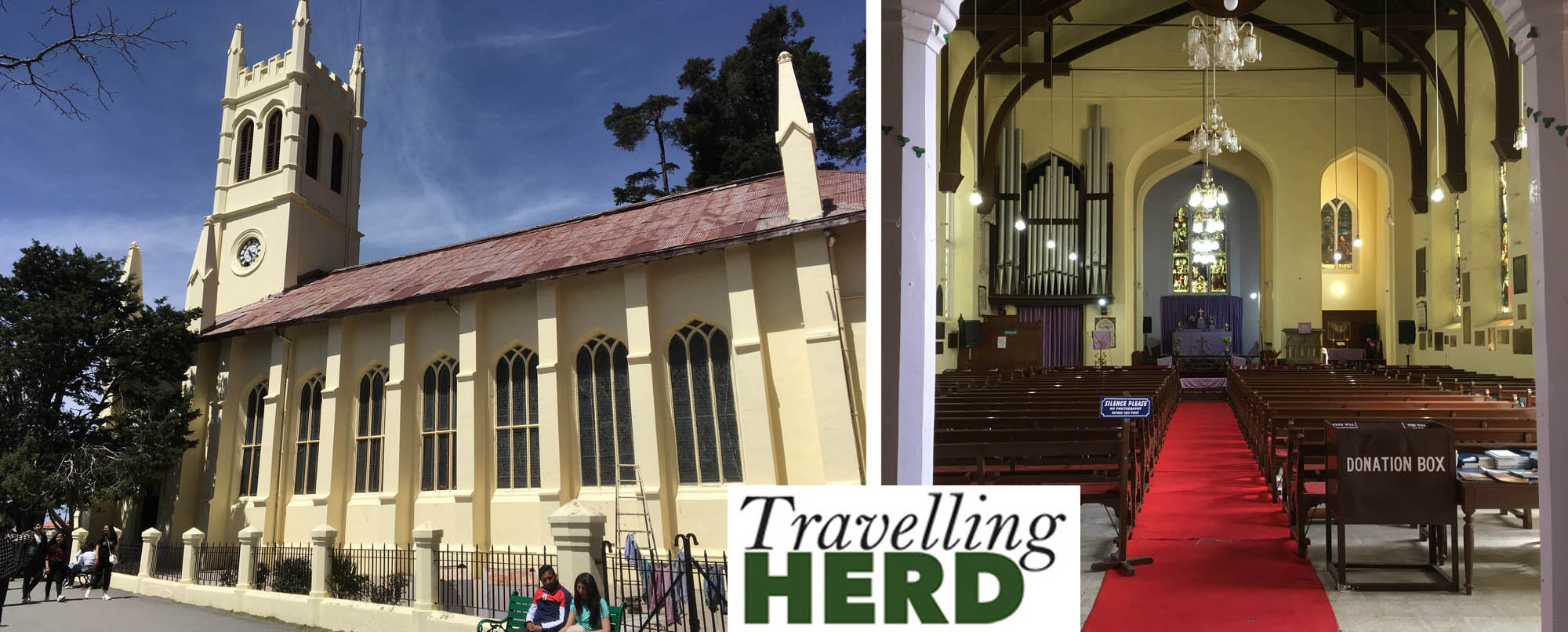
Shimla is a really pleasant place to walk around, partly because it is very clean: there are signs up everywhere exhorting local residents to set an example by keeping the streets tidy and disposing of rubbish properly. Smoking in public is banned and many of the roads, if not strictly pedestrianised, only allow limited vehicle access.
Walking back along The Mall, we passed the restored, but vacant, Town Hall and the Police Station.
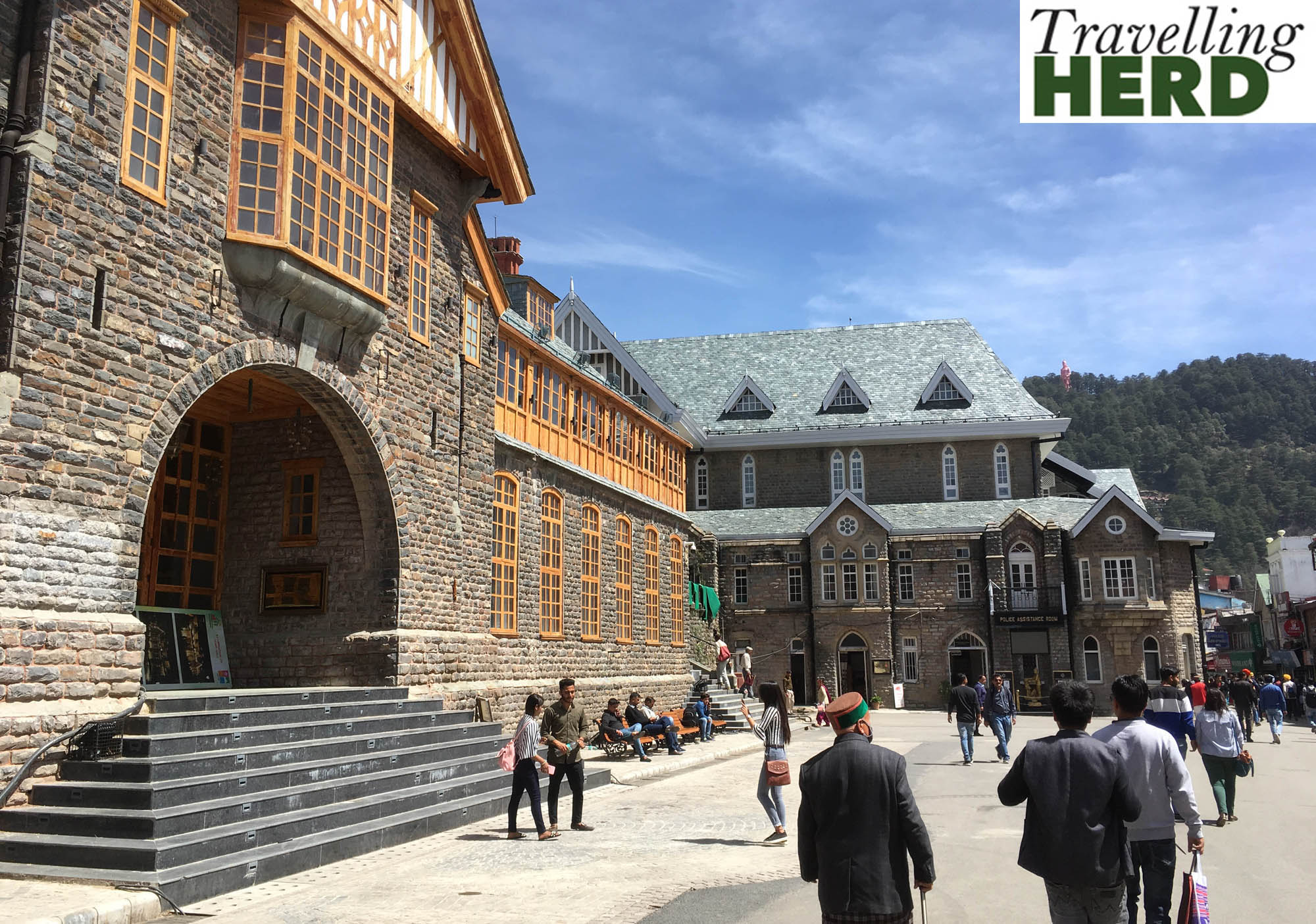
During our stroll through the town Robert had noticed “The Brew Estate”, a local micro brewery with views across Shimla and the surrounding hills, which obviously had to be included on the day’s itinerary.

Video of the day:
Looking down from almost any vantage point red and green roofs predominate, almost as though the town planners are engaged in a large unstructured game of Monopoly and are building houses and hotels at random.
Current Route Map:
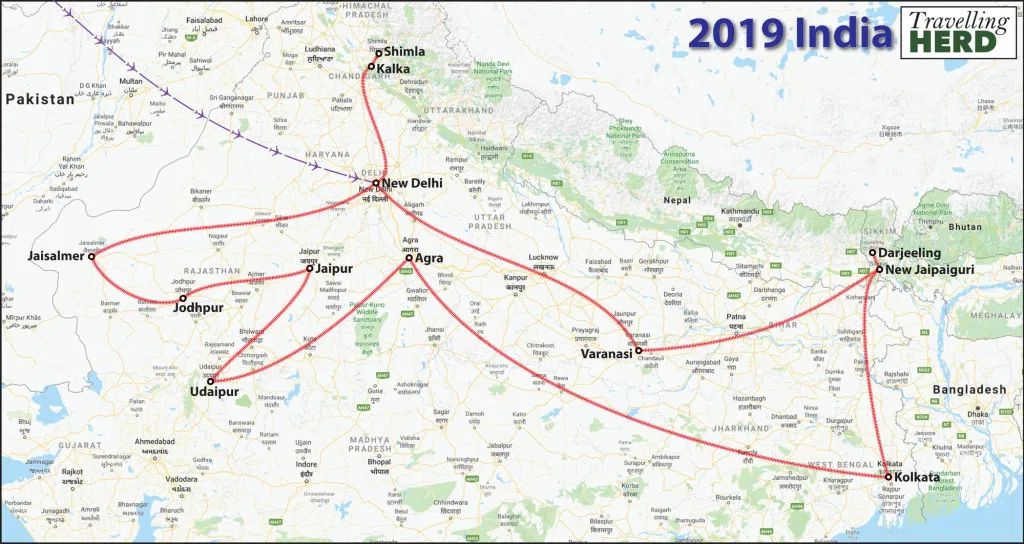
Distance travelled so far:
By Air to Delhi: 4,187miles
By 15 trains to Shimla: 4,155miles
Selfie of the day:






